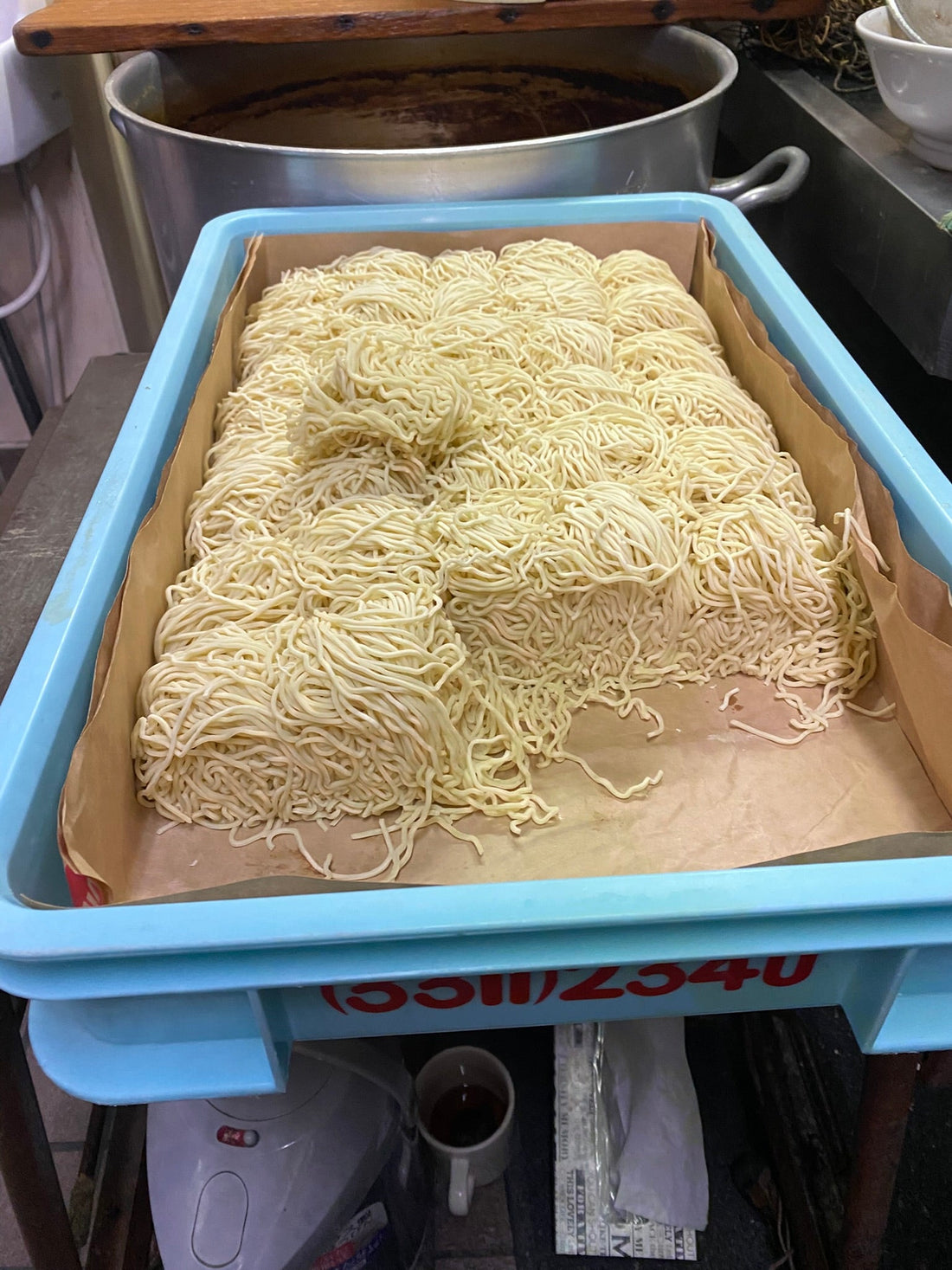
It's not just the soup! Another main ingredient supporting Taikaiken is the noodles from Kusamura Shoten
It's not just the soup that determines the flavor of ramen. In fact, the noodles play just as important a role as the soup in ramen. In particular, Taikaiken's Chinese noodles are only as delicious because they fully absorb the flavor of the dried sardine soup and are intertwined with the noodles.
This time, let me tell you a little about the noodles that make up Taikaiken's ramen.
Noodles from Kusamura Shoten in Suginami, Tokyo
The noodles used in Taikaiken ramen are made by Kusamura Shoten in Suginami, Tokyo. This is a long-established noodle factory that has been making noodles since the Showa era and is highly trusted by many ramen restaurants.
Some people may think, "Aren't all ramen noodles the same?" But that's not true! Kusamura Shoten's noodles are simple, which is why they are the perfect match for the difficult soup of "Chuka Soba."
The main feature of the Chinese noodles served at Taikaiken is the soup made with plenty of dried sardines. This soup is light yet rich, and the flavor fills your mouth with every sip. However, to fully bring out the flavor of this soup, the noodles must be neither too thin nor too thick (the noodle-making machine's teeth are number 20), and they must also have a strong wheat flavor.
Kusamura Shoten's noodles have an exquisite balance.
The appeal of noodles: a texture that blends in with the soup
The noodles used at Taikaiken are "medium-thick curly noodles." They may look simple at first glance, but many people are surprised by their texture and how well they go down.
When you take a sip, the aroma of the dried sardine soup spreads in your mouth, and you can feel the moment when the noodles and soup become one. The noodles have a firm texture, but are not too soft, and the more you chew them, the more you can taste the wheat flavor.
Especially in ramen with delicate flavors such as dried sardine soup, the noodles can sometimes get in the way of the soup. However, Kusamura Shoten's noodles play a vital role in bringing out the flavor of the soup.
Taikaiken and Kusamura Shoten: An unchanging relationship of trust
In fact, the relationship between Kusamura Shoten and Taikaiken goes back many years. Since the company was founded, they have been searching for the "best noodles to go with the soup," and they ended up finding Kusamura Shoten's noodles.
Taikaiken continues to improve its soup with the motto of "More delicious," but at the same time, it has unwavering confidence in its noodles. No matter how much the soup evolves, if it has Kusamura Shoten noodles, it can be said with confidence that "this is Taikaiken's Chinese noodles."
Enjoy the same noodles as in the restaurant at home!
Taikaiken offers ramen in a frozen set on their online shop. This frozen set also includes noodles made by Kusamura Shoten!
Try boiling these noodles in your own kitchen. The moment you pour the heated dried sardine soup over the boiled noodles, you will experience the sensation of the Kusamura Shoten noodles mixing with the soup to create a delicious dish.
You may wonder, "Will it be the same as the ramen you get at a restaurant?" but rest assured. The balance of the soup and noodles has been adjusted to ensure that it tastes just as good as the ramen you get at a restaurant.
Lastly: The craftsmanship of each cup
Taikaiken's ramen is made by combining soup made with plenty of dried sardines and noodles from Kusamura Shoten. Taikaiken's ramen is packed with a "trinity of flavor" that cannot be achieved by either soup or noodles alone.
You can enjoy the deliciousness of Kusamura Shoten's noodles and dried sardine soup at home, as well as eating it at the restaurant, with the "Frozen Ramen Set."
The unchanging taste is supported by the skill and passion of our craftsmen. We hope you will also think about the story behind our ramen while eating Taikaiken's Chinese noodles!



